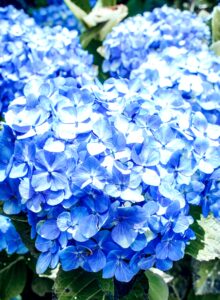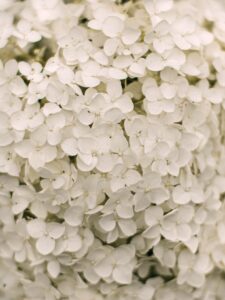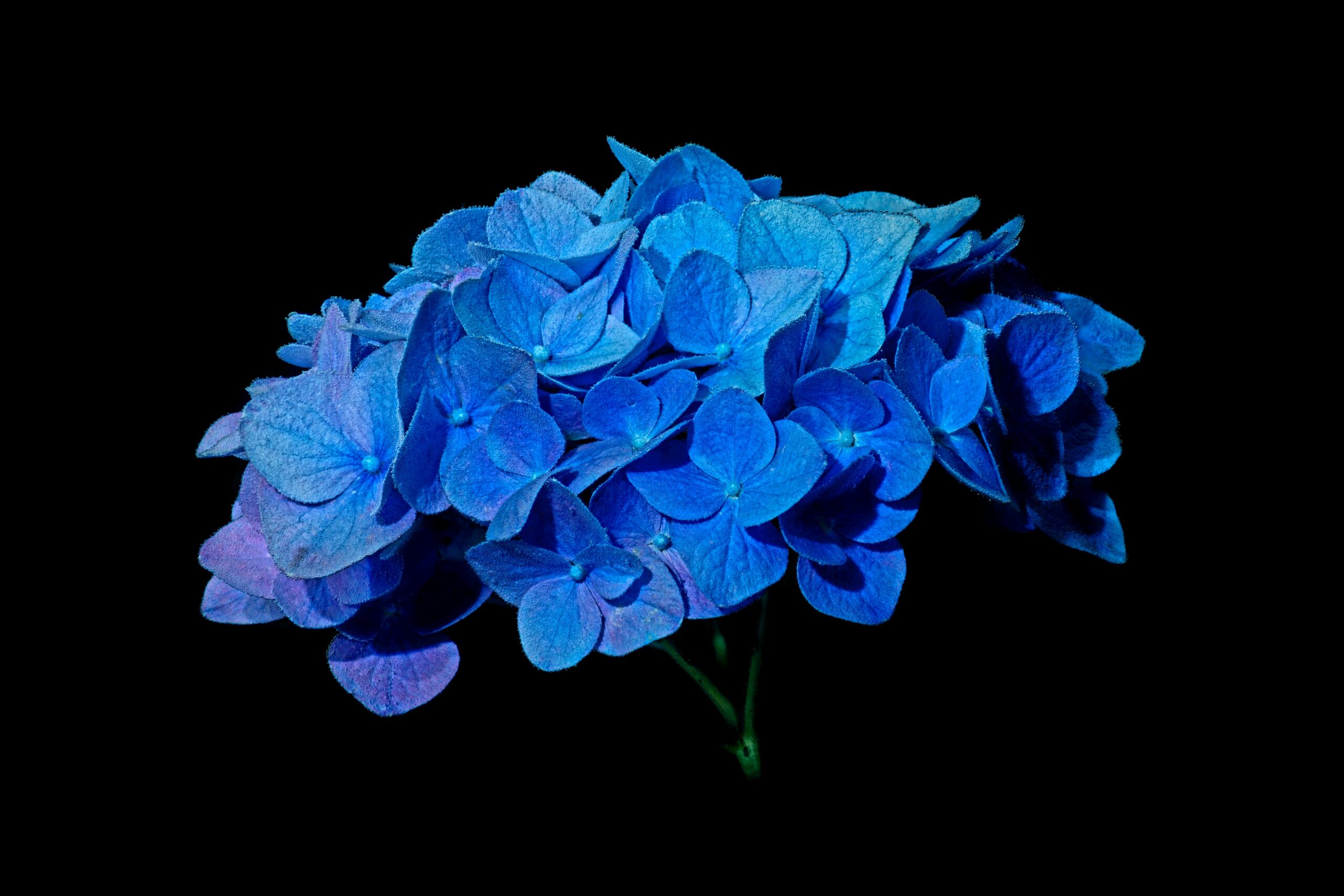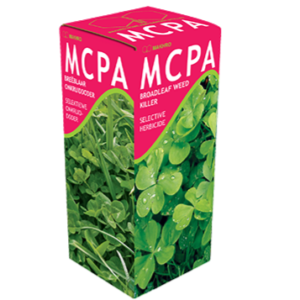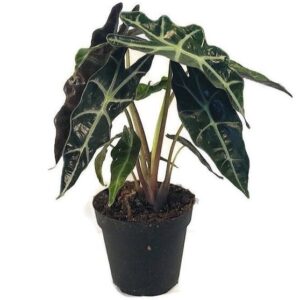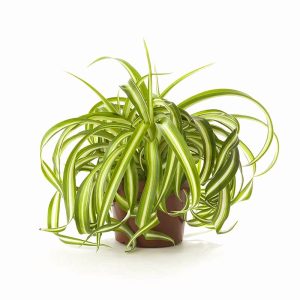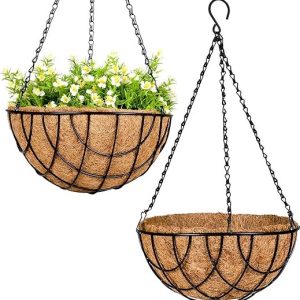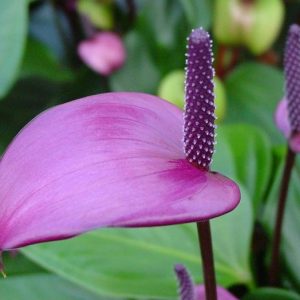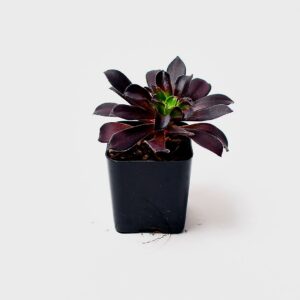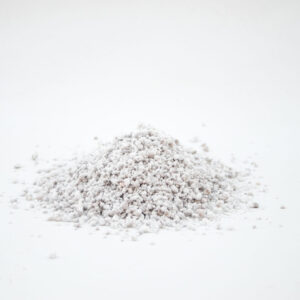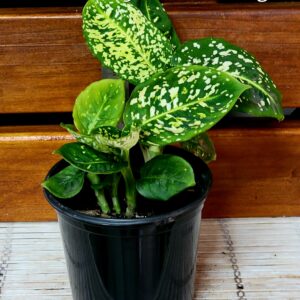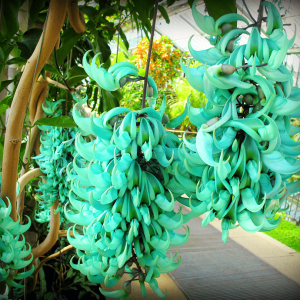How to grow hydrangeas
Hydrangeas are much-loved deciduous hardy shrubs, with large, rounded flower heads in shades of white, blue and pink that blooms in summer and autumn. In this blog we will look at hydrangea care, learn where and when to plant hydrangeas and how to care for them.
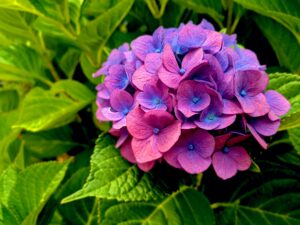 Hydrangea care
Hydrangea care
Where to plant hydrangeas
Hydrangeas do best in moist, well-drained soil and dappled shade – not too sunny and not too shady. Avoid afternoon sunny positions, especially if the soil dries out easily, also try to plant away from strong winds.
Hydrangeas will thrive in most soil types, including alkaline and acidic soil. However, the pH of the soil will change the colour of the flowers of some varieties. Some plants that usually offer pink flowers will appear blue if the soil is acidic.

When to plant hydrangeas
The best time to plant hydrangeas on our coastal areas is from spring to summer, when the soil is warm and moist. Planting in winter is doable, but keep in mind that this is our dry season, and you’ll have to keep an eye on moisture levels in the soil.
How to plant hydrangeas
As mentioned, Hydrangeas like moist soil, so if your soil is light or sandy, bulk it up with moisture-retaining organic matter such as well rotted manure or compost before planting. Adding vermiculite to the soil is another good method to retain moisture in your soil. Water the plant well an hour or so before you plant it. Never plant a hydrangea deeper than it was in its original pot. Mulch after planting, alternatively use a thick layer of well-rotted manure or compost. Keep the plant well watered throughout its first spring and summer.
Feeding and fertilising
In September, feed your hydrangea with a high Phosphorus (P) fertilizer, or a special hydrangea formulated food; and mulch the soil around the roots well. Don’t feed the plant a high nitrogen fertilizer as nitrogen stimulates leaf growth at the expense of flowers.
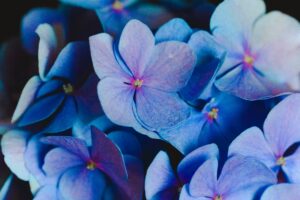
Changing the flower colour of hydrangeas
You can change the colour of hydrangeas flowers from pink to blue by feeding with a ammonium sulphate fertilizer for acid loving plants. Alternatively, you can grow your plant in a pot of peat-free acidic compost and water with rain water to keep the flowers blue.
Changing hydrangea flowers from blue to pink is trickier. You will need to raise the pH by adding dolomitic lime. It’s quite common for a plant to produce a few different coloured flowers on one plant in the first year of growth. Few gardeners concern themselves with trying to change the flower colour – but it’s interesting to know why plants may vary.
How to prune hydrangeas
Pruning is not essential, but left unpruned the plant will get taller with most of the flowers at the top. Prune twice a year, summer and in winter. Towards the end of January, just after flowering, remove all the dead flowers. They produce their flowers on old wood, so don’t prune any of those back, or next summer’s flowers would be lost.
In June or July, prune for the second time by removing all the dead, old or weak stems. Prune all the remaining stems back to a healthy framework that’s between 30cm and 60cm high, depending on how tall you want your plant to be. Cut back to just above a cluster of healthy buds. The idea is to channel all the plant’s energy into producing new flowers. After pruning, use a tree seal or pruning seal to prevent infections and rot.
Add plenty of well-rotted manure or compost to the soil to encourage the next season’s growth and mulch well to conserve water in the soil flower head to just above the top set of plump buds that are forming under the dead flower head. This is where the new flowers will form. If you have an overgrown plant, cut some of the stems off at the base.
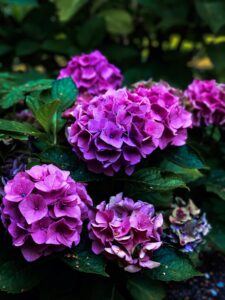
Problem Solving
Hydrangeas are very easy to grow and there are few problems that affect them. A lack of flowers is likely to be due to pruning at the wrong time of year.
Purple leaves can be due to a sudden decrease in temperature e.g. a cold front, but the should revert to their usual green once the weather has warmed. Late in the season, the leaves of some hydrangeas change colour as the plant begins to go dormant in autumn. Purple leaves can also be a sign of phosphorus deficiency, which is particularly common on plants where the flower colour has been changed. Adding Magnesium Sulphate or adjusting the pH slightly by applying a fertiliser high in phosphorus may help.
Hydrangea scale is a sap sucking insect found on hydrangeas. In severe cases it can cause poor growth and leaf loss. You may spot the eggs, covered in a white waxy material, in early summer. The mature scale insects look like brown blobs.
Weevils can attack hydrangeas that are growing in pots. You may see chunks bitten out of the leaves, but the main problem takes place beneath the soil, where the c-shaped white grubs eat the roots. This can cause the plant to decline rapidly. If the pest problem is serious, spray with a general insecticide such as Makhro Plant Care or Kemprin.
CLICK HERE TO ORDER YOUR HYDRANGEAS ONLINE.
